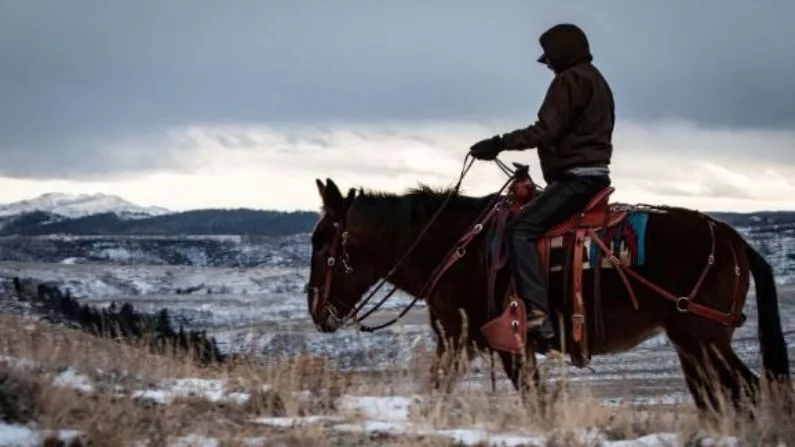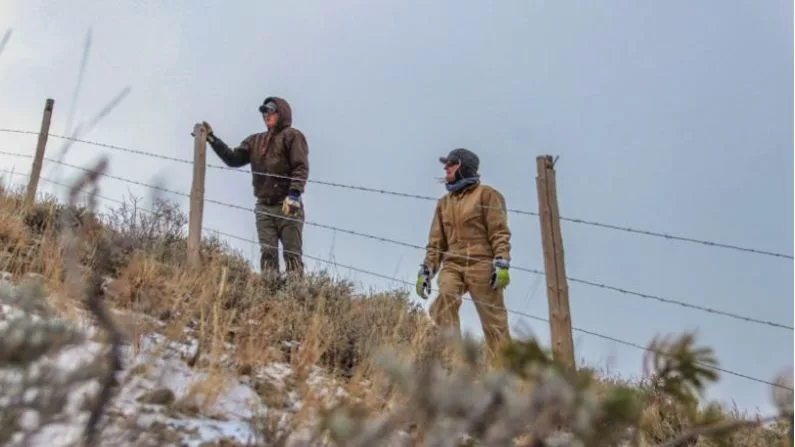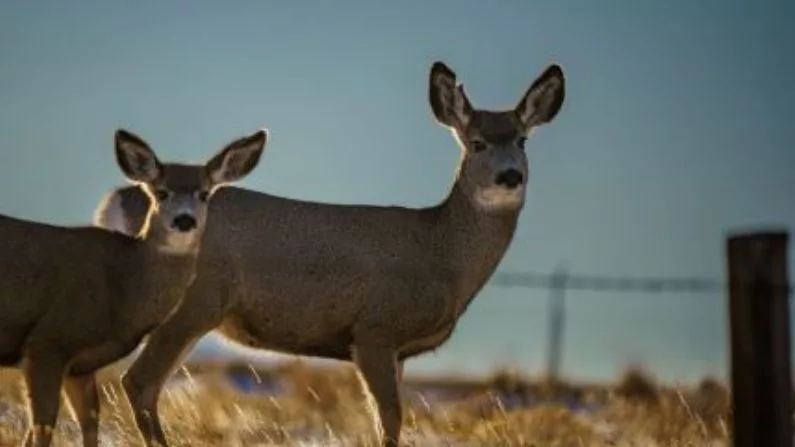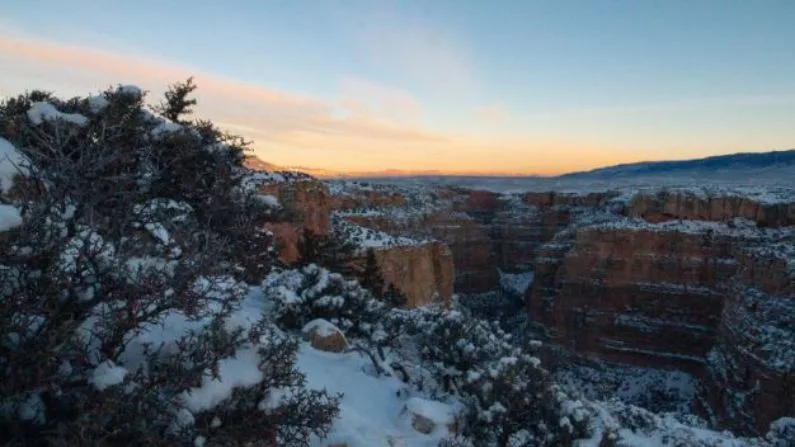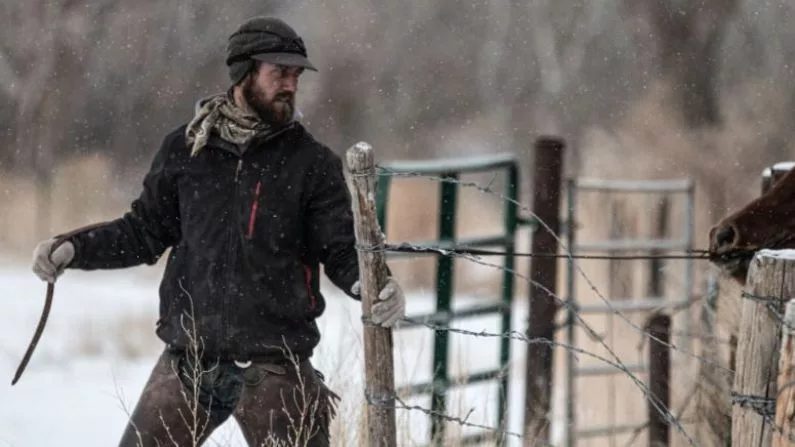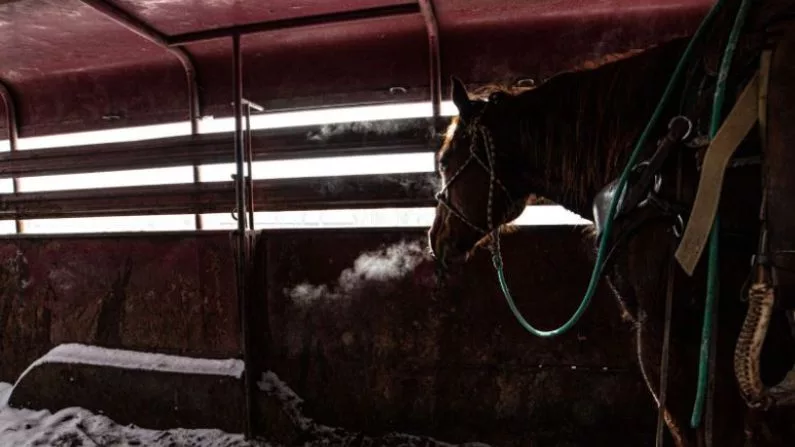This story comes through a content-sharing partnership with Wyoming Public Media.
If you’ve been a Wyoming Public Radio listener for sometime, you might have heard some of our coverage on conservation easements. They are a legally binding contract that’s sometimes used by landowners that can help keep wide open spaces … open.
WPR collaborated with the My Wild Land film series team to do a deep dive on ranchers who are doing just that — preserving their open spaces for both ranching and wildlife.
Terry Creek Ranch
Rancher Al Johnson of Albany County remembered what it was like as a kid at Terry Creek Ranch.
“When I first came up the road as a little kid, it was like driving into Disneyland,” Johnson said. “And there’s so much wildlife everywhere. And it’s amazing. The amount animals that were here … there was literally thousands of mule deer in this area.”
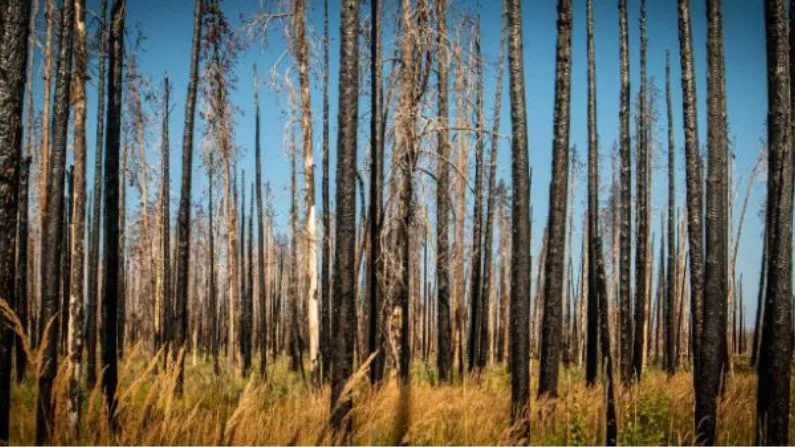
The Terry Creek ranch is in Albany County and is over 600 acres. It’s home to lots of wildlife. (My Wild Land)
But that’s not the case now. More than 60 years later, Johnson said he sees significantly less wildlife out on the ranch. He thinks it is because of a lot of things, but nearby development and subdivisions are some of the bigger ones.
“I don’t have any control over that. What I do have control over is my land,” he said.
Deer, elk and pronghorn migrate through his 634-acre ranch in southeast Wyoming. It sits on rolling hills overlooking a creek where beavers have nestled in, creating several ponds. In the distance are the snow capped peaks of the Snowy Range.
Just like a lot of places in the state — the wind blows hard out there.
“Boy look at those trees blow,” Johnson said as he drove his truck on a bumpy two track across the ranch.
He pointed to Sheep Mountain. It rises tall out of the prairie — kind of a standalone mountain. It has a long ridgeline covered in trees, and it holds one of the country’s few big game refuges. One hillside of Sheep Mountain is on Johnson’s property, and it’s pretty windswept and open, so a lot of those big game come onto his property in the winter, looking for food.
“The wind that’s blowing now cleans off these hills over here and this is where they come for their feed when everything else has a lot of snow on it,” he said.
Johnson got out of the truck and stood by a taught, three-strand wire fence with wooden top poles. It’s a wildlife friendly fence he had put up a couple years ago.
“With the rail on top, it looks like it’ll make it real easy for the elk to go over and the deer go under,” Johnson said. “I know the antelope are going under.”
The fence is part of his effort to help with wildlife migration and grazing. He partnered with the Rocky Mountain Elk Foundation in 2021 to conserve this area of his ranch for wildlife. Studies show that wildlife that can migrate and move freely are more likely to live longer, healthier lives.
What is a conservation easement?
Johnson’s agreement is called a conservation easement. That means the Rocky Mountain Elk Foundation basically bought the development rights to his ranch to preserve the land for wildlife. The land is still in Johnson’s name and he can still ranch on it, but he can’t ever sell it to developers.
“So it’s a very big decision,” Jessica Crowder, executive director of the Stock Growers Land Trust, said in a previous interview with WPR.
They are just one group in the state negotiating conservation easements, working with 90 families since 2001.
“With that very big decision come families who really just do have that deep connection with the land, who are interested in allowing agriculture to exist on that land forever,” Crowder said.
People like the Johnsons are a big part of the puzzle of conserving wildlife habitat, but also agricultural land. It’s kind of like a trade — if you help protect wildlife and don’t sell your ranch to someone who wants to subdivide, they’ll give you funds to keep your ranch going.
“That’s really important for continuing food production in our country,” Crowder said. “I think that we are seeing a loss of agricultural lands at a much faster pace now than we have in recent years, and it’s really important to keep those lands available for future generations to produce agriculture products on those lands.”
Crowder said it’s working. Her group alone has conserved almost 300,000 acres in Wyoming.
Ranching with the Bishoffs
Over in Bighorn county is the Bishoff family. The cattle ranch they run sits at the base of the mountains, with a mix of lush, green hay meadows and rugged, rocky terrain. There’s even a 1,200-foot canyon — all perfect habitat for mule deer, bighorn sheep and elk.
Tyrell Bishoff runs the day-to-day operations. He looks straight out of a western movie, with a cowboy hat, silk scarf and worn-in blue jeans.
On any given day, Bishoff might be fixing fences, riding his horse out on the range or doctoring cattle.
On this particular crisp spring morning, Bishoff stood with a coffee in one hand and a milk bottle in the other. A little, black newborn calf sucked the milk.
Keeping this little guy alive wasn’t easy.
“Yeah, normally after that kind of weather you wouldn’t have any extra calves around,” Bishoff said.
Late winter storms make it hard for calving. If you’re not checking on them around the clock, they might die. This is a way of life for Bishoff — he wouldn’t have it any other way. But 10 years ago, he almost lost it.
“Our ranch was getting ready to go under, like, we were basically in bankruptcy and in over our heads,” he said.
Right before calling it quits on ranching all together, in 2013, his family secured a conservation easement on their property with the Natural Resources Conservation Service (NRCS), a federal government group that also offers easement deals.
“It made it so we could pay off all of our debt, and have a little bit of money to get back on our feet,” Bishoff said. “And so it was kind of like a new beginning, just a whole new start.”
In the years since, they’ve used the money to hire a few ranch hands and increase their cattle numbers, all while keeping open spaces for wildlife.
Just one tool in the toolbox
Conservation easements are just one tool for conservation.
“They aren’t for everybody,” said Jennifer Lamb, director of conservation programs for The Nature Conservancy, another group that negotiates easements.
Lamb said ranchers that turn to them usually want to help wildlife out, but also are looking for the financial incentives — kind of like the Bishoffs.
“It can be a useful either infusion of cash to help a struggling operation or just to maintain an operation so that future generations can take it over,” she said.
But, Lamb said the fact that it is forever can be a turn off for some. Also, each easement has unique restrictions, including things like limiting further development or what kind of crops they can grow.
“What if they do want different kinds of agricultural operations in the future and they do want more flexibility to be able to either add infrastructure or change their operation entirely, or what if they think the future is subdivision?” Lamb said.
Ultimately, she said it really just varies from ranch to ranch. One way to think about it, is how people might like the state to look in the future.
Just in the last three years, Wyoming’s population has grown by 4,544 people, and that growth is expected to continue. That means more houses, businesses and people on the landscape. So how all this development intermingles with wildlife and ranch operations could largely be determined by how much land is kept open in the coming years.
‘We’re pretty small potatoes’
Back with Johnson, he said he is just doing the best he can to manage his land, and the conservation easement route has worked for him.
“So I don’t know what it’s going to be like. This was just what we can do to make a better deal, and we’re pretty small potatoes. But it just felt good to give something back instead of always taking,” he said.
About one percent of Wyoming land is under a conservation easement. Nationwide, the numbers are pretty similar with about 1.5 percent of land conserved from coast to coast.
But, those who’ve taken on an easement, for wildlife or agriculture, say it’s one way of ensuring their piece of wide open space … stays open.
This story was produced in partnership with the Wyoming Migration Initiative at the University of Wyoming. Some of the audio used in this segment was sourced from the My Wild Land film series presented by Muley Fanatic Foundation with support from Maven. Watch the full film series here.

